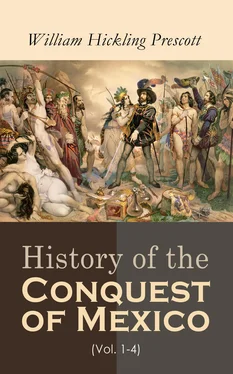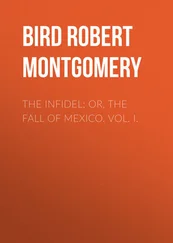The most important contribution, of late years, to the early history of Mexico is the Historia antigua of the Lic. Don. Mariano Veytia, published in the city of Mexico, in 1836. This scholar was born of an ancient and highly respectable family at Puebla, 1718. After finishing his academic education, he went to Spain, where he was kindly received at court. He afterwards visited several other countries of Europe, made himself acquainted with their languages, and returned home well stored with the fruits of a discriminating observation and diligent study. The rest of his life he devoted to letters; especially to the illustration of the national history and antiquities. As the executor of the unfortunate Boturini, with whom he had contracted an intimacy in Madrid, he obtained access to his valuable collection of manuscripts in Mexico, and from them, and every other source which his position in society and his eminent character opened to him, he composed various works, none of which, however, except the one before us, has been admitted to the honors of the press. The time of his death is not given by his editor, but it was probably not later than 1780.
Veytia’s history covers the whole period from the first occupation of Anahuac to the middle of the fifteenth century, at which point his labors were unfortunately terminated by his death. In the early portion he has endeavored to trace the migratory movements and historical annals of the principal races who entered the country. Every page bears testimony to the extent and fidelity of his researches; and, if we feel but moderate confidence in the results, the fault is not imputable to him, so much as to the dark and doubtful nature of the subject. As he descends to later ages, he is more occupied with the fortunes of the Tezcucan than with those of the Aztec dynasty, which have been amply discussed by others of his countrymen. The premature close of his labors prevented him, probably, from giving that attention to the domestic institutions of the people he describes, to which they are entitled as the most important subject of inquiry to the historian. The deficiency has been supplied by his judicious editor, Orteaga, from other sources. In the early part of his work, Veytia has explained the chronological system of the Aztecs, but, like most writers preceding the accurate Gama, with indifferent success. As a critic, he certainly ranks much higher than the annalists who preceded him, and, when his own religion is not involved, shows a discriminating judgment. When it is, he betrays a full measure of the credulity which still maintains its hold on too many even of the well-informed of his countrymen. The editor of the work has given a very interesting letter from the Abbé Clavigero to Veytia, written when the former was a poor and humble exile, and in the tone of one addressing a person of high standing and literary eminence. Both were employed on the same subject. The writings of the poor abbé, published again and again, and translated into various languages, have spread his fame throughout Europe; while the name of Veytia, whose works have been locked up in their primitive manuscript, is scarcely known beyond the boundaries of Mexico.
[The opinions set forth by Mr. Prescott respecting the Mexican empire were attacked with much vigor by Lewis H. Morgan. Mr. Morgan demonstrated conclusively that many of those opinions were erroneous. But, as Payne says in his History of the New World called America, vol i. p. 306, “his results cannot be regarded as satisfactory, much less as final.” The Spanish chroniclers Prescott consulted were correct ordinarily in their statement of facts, but were misleading in their conclusions because of their inability to comprehend the Aztec institutions.
On the pueblo as the unit of aboriginal history, see Payne, vol. i. pp. 36-47.
In his Ancient Society, p. 186, Mr. Morgan says: “The histories of Spanish America may be trusted in whatever relates to the acts of the Spaniards, and to the acts and personal characteristics of the Indians; in whatever relates to their weapons, implements and utensils, fabrics, food and raiment, and things of a similar character. But in whatever relates to Indian society and government, their social relations and plan of life, they are nearly worthless, because they learned nothing and knew nothing of either. We are at full liberty to reject them in these respects and commence anew, using any facts they may contain which harmonize with what is known of Indian society.” He does not, however, always observe his own rules if those rules seem to militate against the thesis he is endeavoring to establish. Moreover, he is so dogmatic in his statements and so confident in the infallibility of his own judgment, that the reader who is seeking simply to ascertain the truth about the whole matter is oftentimes intensely exasperated with him. This is especially true with respect to the famous essay on “Montezuma’s Dinner,” where he writes almost as though he had been a guest at the banquet and had partaken of the viands which were there consumed. As Mr. Morgan may justly be regarded as the founder of a school, it is well to state his views at length.
According to him, then, there was no kingdom or empire of Mexico. There was simply a confederacy of three tribes, and this confederacy was a military democracy. The governmental powers were vested in a council of chiefs with a general commander. The council exercised all civil power, the military power being left in the hands of the war chief. There were no feudal castles inhabited by lawless lords. There were only great communal houses tenanted by clans.
In his brilliant work on Ancient Society, Mr. Morgan places below civilization two stages of development—savagery and barbarism. The invention of pottery marks the difference between these two stages. The savage makes no pottery. When the women of the savage tribes used vessels of fire-hardened clay for boiling their food they had passed into the first stage of barbarism. Elsewhere there were pastoral stages of development. In North America there were none. The only domesticated animal its inhabitants possessed when the Europeans landed on the continent was the dog. The first stage of barbarism in North America was marked by the cultivation of maize or Indian corn. This grain can be cultivated more easily than any other cereal. No other yields such enormous returns. In virgin soil it is only necessary to drop the seed into the earth. Nature cares for its complete development. But virgin soil becomes exhausted in a few years. As population becomes denser and migrations cease to be practicable, the land must be more carefully tilled, and, where rains are comparatively infrequent, must be irrigated. Irrigation and the use of adobe (sun-dried brick) and stone in building mark the beginning of the second period of barbarism. In this period also tools of stone give place to those of metal, the metal used in America being copper. The Aztecs, the Mayas, and, in South America, the Peruvians were in the second period. But to the third period, when the smelting of iron ore was invented, these people never passed.
The invention of a phonetic alphabet and the use of written records, Mr. Morgan thinks, mark the beginning of civilization. But, as John Fiske points out, it will not do to insist too narrowly upon the phonetic alphabet. Hieroglyphics have perpetuated much historic record in Egypt and China. Although the Mexicans and Central Americans did not smelt iron ore, they yet possessed historic records in their hieroglyphics (hieroglyphics which may still be read). They were then enjoying civilization of an extremely rude type, combined with a marvellously developed barbarism. For though their barbarism was marked by human sacrifices and by cannibalism, yet, according to testimony which Mr. Morgan says may be taken at its face value, these barbarians had pleasure-gardens and fountains, baths, menageries, feather-work that was marvellously beautiful, pottery that showed admirable taste, vessels of gold and silver, and many other accessories of an advanced civilization.
Читать дальше












